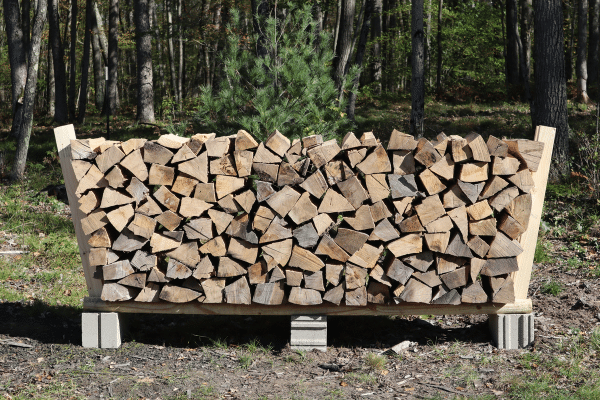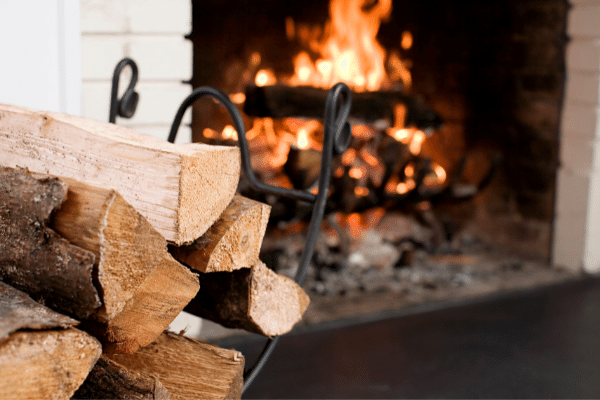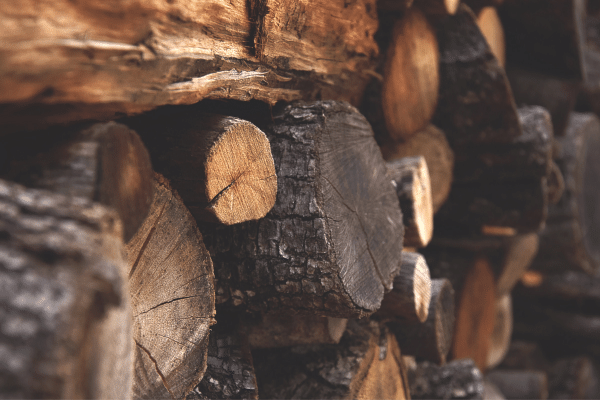- Home
- Types Of Firewood
- Is Ironwood Good Firewood
Is Ironwood Good Firewood?
This post may contain affiliate links so I earn a commission.
So what exactly is ironwood, and more importantly.....is ironwood good firewood?
It’s a debate as old as time - or at least, as old as fireplaces.
When it comes to building a wood-burning fire, what type of wood is the best?
And is ironwood really worth the effort?
Ironwood is an umbrella term for trees from various species that are incredibly dense and hard.
It has been around for centuries, and its strength made it popular for shipbuilding, furniture, and other projects where durability was key.
However, not all ironwoods are created equal; some have higher calorific values (the amount of heat produced per unit of fuel), which makes them better suited for use in fireplaces or wood-burning stoves.
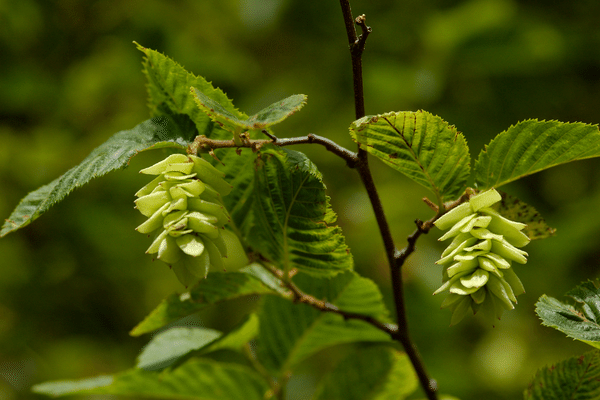
In this post, we'll be taking a closer look at
the most common type of ironwood you'll hear people refer to, the O. virginiana.
Let's dive in!
What Is Ironwood?
Ironwood is renowned for its strength and durability, making it an ideal choice for furniture, flooring, and artwork.
Botanically known as Ostrya virginiana, ironwood is a tree native to the United States and this hardy plant has evolved to have an extremely dense wood.
Due to its density, strength, and resistance to decay, ironwood is used in applications that require reliable structural performance, such as various bridge constructions and railroad ties.
All things considered, ironwood offers a winning combination of beauty and dependability that makes any environment come alive!
Of course, it's also an excellent choice for building a fire.
Is Ironwood A Hardwood?
Ironwood is often thought of as one of the hardest woods there is.
It certainly lives up to its reputation - a relative of hickory, this type of hardwood has one of the highest Janka hardness ratings, meaning it is far more difficult to saw and nail than other types.
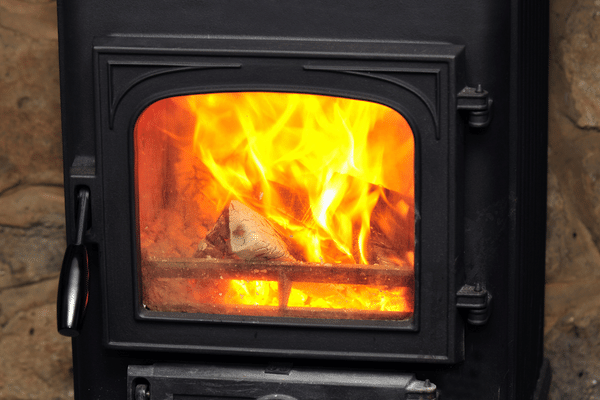
Ironwood's impressive strength and density make it an ideal choice for
outdoor applications and furniture that needs to stand up to abrasive wear over
time.
With a deep color palette and interesting grain pattern, ironwood adds an element of sophistication and style while performing extremely well in any home or garden project.
What Can You Do With Ironwood?
Ironwood is commonly used for fence posts, firewood, and charcoal.
Due to its extreme hardness, ironwood is very rarely used in any fine woodworking, such as cabinetry.
It is ideal, however, for butcher blocks, as it can withstand many years of knives cutting their surfaces.
Some woodturners have found ironwood, even though very hard, can be turned on a lathe to create beautiful legs for furniture, tool handles and other such items requiring a very strong wood.
In the desert areas where desert ironwood can be found in abundance, these trees provide invaluable shade to many species of wildlife.
They also serve as a food source as the flowers and seeds are edible not only to wildlife but to humans, too.
How Does Ironwood Split And Season?
Is ironwood good firewood to split?
Well, that's somewhat of a trick question.
Ironwood is a great firewood when it comes to splitting, because it usually doesn't get large enough to require splitting.
Those that do need to be split often are not successful, as the wood will usually just separate into small pieces instead of splitting all the way through.
Ironwoods don't often get much larger than four to six inches in diameter - very rarely reaching eight inches - which means that many Ironwoods don't have to be split at all.
As for seasoning, it takes the same amount of time as other dense hardwoods; although it can be burned within six months, it's best to give the wood one to two years to dry completely for maximum heat output.
How To Store Ironwood Firewood
When purchasing and storing ironwood firewood, it's important to take the proper steps so you can continue to benefit from its long-burning capabilities.
The best way to store wood is in wood sheds with the wood off the ground on pallets, small logs or old lumber.
This will help promote air circulation and prevent mold.
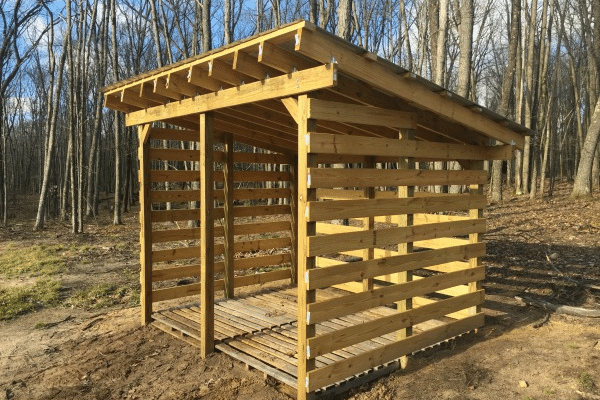
Sheds should always be located in an area that
receives ample sunlight but more importantly, receives good amounts of wind;
this will help dry out the firewood more efficiently.
Ensure that the location of your shed or stack of firewood is somewhere easily accessible.
When storing ironwood firewood, it’s important to keep the wood covered from direct contact with dampness or rain, yet to still allow for circulation of air.
The ideal way is to cover the tops of the stacks with tarps or old metal roofing, which provides all necessary protection and ventilation.
Similarly, you should never store large amounts of this type of firewood in your house as it can attract numerous insects, including termites that could be hard to get rid of.
It’s best if only a small armful is brought inside and kept closest to the stove when needed for immediate use
Is Ironwood Good Firewood To Burn?
Ironwood is an amazing firewood to have in your home, capable of burning steadily and cleanly for up to eight hours, ensuring that late nights spent huddled around the fireplace can be made more enjoyable with uninterrupted warmth.
Its high quality makes it one of the most sought-after firewoods for those looking for a long-burning, environmentally friendly fireplace fuel.
Ironwood is also well known for its intense heat output, which is why many people choose to mix it with other species, such as oak or maple, allowing them to maintain a consistent and comfortable fire level without having to constantly adjust the logs due to excessive heat from the ironwood alone.
How Hot Does Ironwood Firewood Burn?
Ironwood firewood is a popular choice for home use because of its high burning temperature.
It produces an impressive 23.7 million BTUs per cord, making it hotter than many other types of firewood like maple.
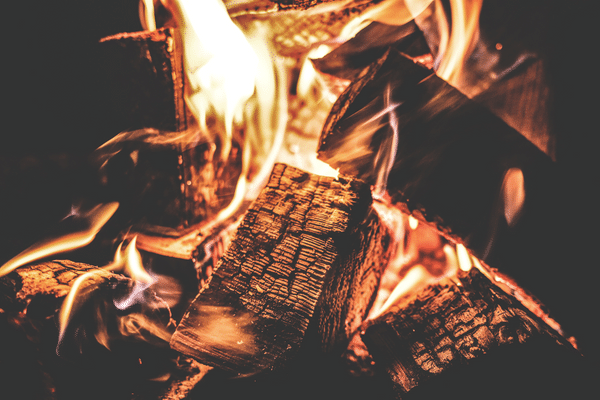
Its intense burning heat and long-lasting coal
quality make it the perfect candidate for overnight use.
Not only will your evening fire remain lit, but you'll also exhaust every bit of warmth that ironwood has to offer.
Whether you're looking to keep your space heated throughout the night or just want to revel in a warm glow, ironwood is an excellent choice.
Does Ironwood Firewood Produce Sparks And Creosote?
Ironwood is an excellent choice of firewood due to the virtually non-existent sparks it emits and its ability to produce little creosote.
Its natural high heat output lessens the amount of creosote buildup, resulting in cleanings being needed less frequently.
Yet it still provides warmth through a blazing flame.
Its superior clean-burning characteristics make ironwood perfect for outdoor and indoor settings alike!
Is Ironwood Good Firewood - Overall
While there isn't one right answer when choosing firewood, ironwood certainly has some advantages over other types due to its high density and slow burn rate.
If you're looking for a wood that will last all night long with minimal smoke production, then definitely give ironwood a try!
